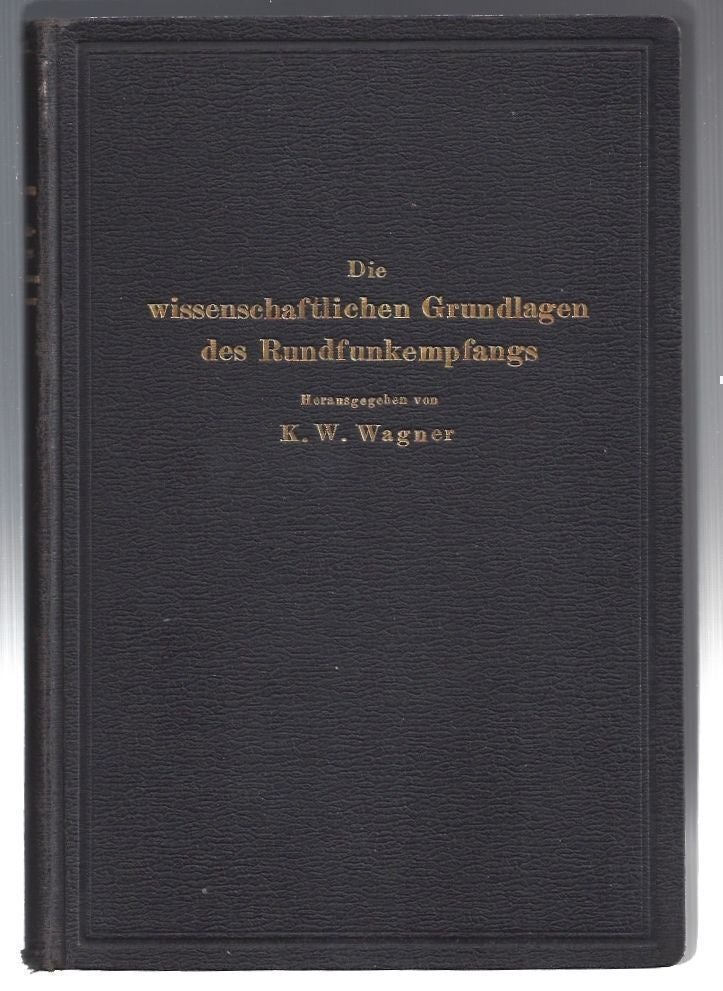
Die Wissenschaftlichen Grundlagen des Rundfunkempfangs
Berlin: Julius Springer 1927. First Edition. viii, 418, [2]-ads pages. 8vo. Publisher's blue/black boards with gilt lettering and publisher's device on spine and titles on front panel. Bookstore tag on front pastedown. Binding glued in gutter at Vorwort (foreword). Otherwise a nice clean bright copy. Text in German. Very Good. Cloth. [24331]
Wagner was a full member of the Academy of Sciences Berlin and was made in 1931 an Honorary Member of the American Academy of Arts and Sciences , Boston. He held numerous other awards including in 1930: Slaby-Plakette des Deutschen Funktechnischen Verbandes. In 1924 he founded the magazine Zeitschrift Elektrische Nachrichtentechnik.
In the foreword, Wagner notes that the sudden onset of broadcasting has created high demand for wireless telephony and has accelerated technical developments dramatically. The new building blocks of broadcasting can be built on the progress made in radio technology. In addition to the general relations of electrodynamics, the laws of transmission, propagation and reception of electric waves, the events occurring in the electron tubes and their mode of action in the various circuits as rectifiers, amplifiers and vibration exciters and finally the laws of acoustics and the operation of the electro-acoustic devices all play a role. Knowing all of these things is essential for building a good broadcast radio, but is not easy to acquire because so far there has been no where to go for sound details regarding all of these issues.
The Heinrich Hertz Society in 1925 created a plan to promote broadcasting over the airwaves by organizing a series of lectures about "The scientific basis of radio communications". This book was the much enlarged result. Wagner is probably best known for the development of what we now call wave filters,work he did starting in 1915.
"The most prominent researchers, G. A. Campbell in the United States and K. W. Wagner in Germany, explored selective filter circuits for telephone applications in the early years of World War I, thus paving the way for the first ideas about electrical circuit synthesis. They designed sophisticated filter circuits simply by cascading elementary sections of lossless inductors and capacitors. The circuits obtained in this way had a striking similarity to circuit models in engineering transmission line theory and henceforth were called ‘wave filters’." (Life and Work of Wilhelm Cauer (1900 – 1945), Cauer et al, Proc. MTNS2000, Perpignan, France, June 19 - 23, 2000)
Waveguide filters today are most useful in the microwave band of frequencies, where they are a convenient size and have low loss. Examples of microwave filter use are found in satellite communications, telephone networks, and television broadcasting.
Davis, Electrical and Electronic Technologies, #372 (noting that in 1915 filter technology came into being with the independent proposal of it by Campbell and Wagner).
Price: $175.00

